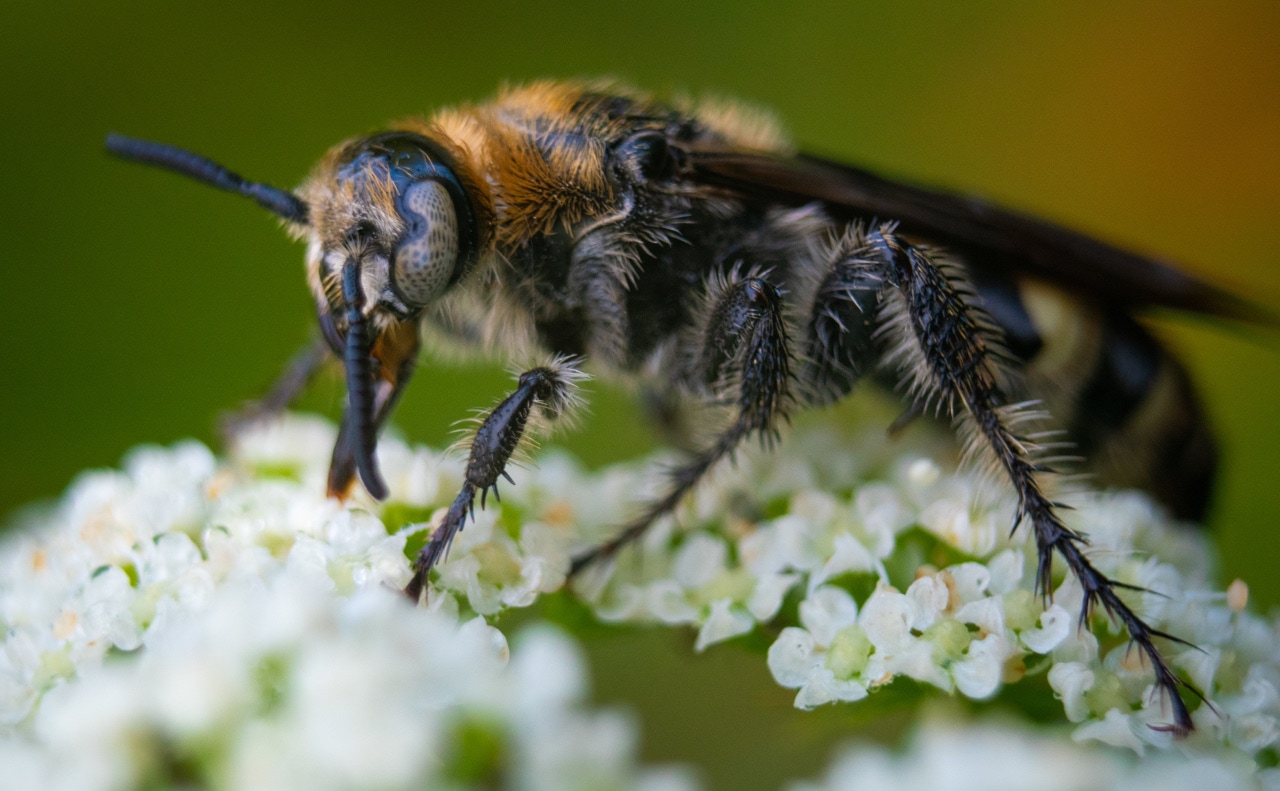North Carolina Pollinators
[[translate(episode,'title')]]
[[translate(episode,'audioCredit') || translate(episode,'credit')]][[translate(episode,'title')]]
[[translate(episode,'audioCredit') || translate(episode,'credit')]]Audio Transcript
You are standing at the end of the path, which comes to a “T.” To your left is the Amphitheater. In front of you, in the distance, is East Building. To your right is the continuation of the Eco Trail.
North Carolina Pollinators: Pollinating insects play an essential role in the fertilization of flowers necessary in the production of agricultural food. Pollinators also support plant diversity in natural habitats. Butterflies and hummingbirds pollinate flowers accidently by spreading pollen from flower to flower while collecting nectar, a sugary liquid within the flower. Bees are considered the most efficient pollinators because they visit flowers to gather pollen to feed their offspring, spreading greater quantities of pollen as they move from flower to flower. There are over 500 species of native bees in North Carolina.
The leaf cutter bee is about an inch long. It has a triangular torso and long antennae. Its head is larger than other varieties because of muscles that are used to cut leaves. Its underside turns a bright golden yellow when it carries pollen.
Small carpenter bees are black with blueish green highlights. These bees are less than one-half of an inch long. They are referred to as carpenters because they chew through dead wood to make their nests.
If you would like, reach out and touch images of both bees on the right half of the sign. The top image is of a leaf cutter bee. You can feel the shape of this bee and its fuzzy legs atop small white flowers. The image below is of a small carpenter bee. It is capturing an insect covered in pollen above the yellow center of a light purple flower. Keep in mind that these bees are only an inch long or smaller.
Turn right and proceed along the Eco Trail toward the pond. Listen to sounds of the Park as you walk. Perhaps you hear birds calling to one another? Do you smell the grass? The next sign is located 130 feet straight ahead on the left. Take note: the sidewalk slopes downward to the left. Stay in the center of the paved path.
Leaf cutter bee photo by Bryan Barnes
